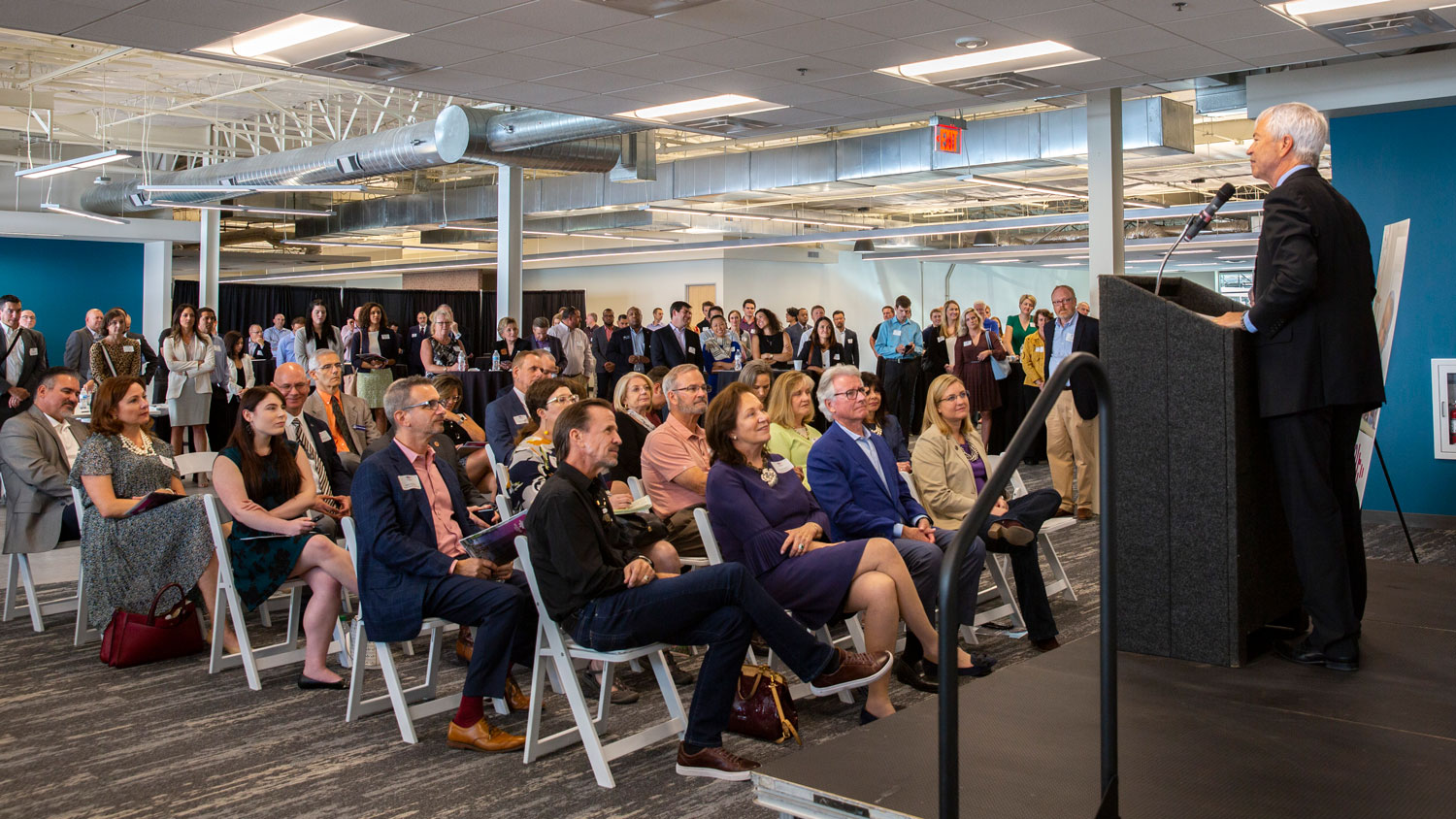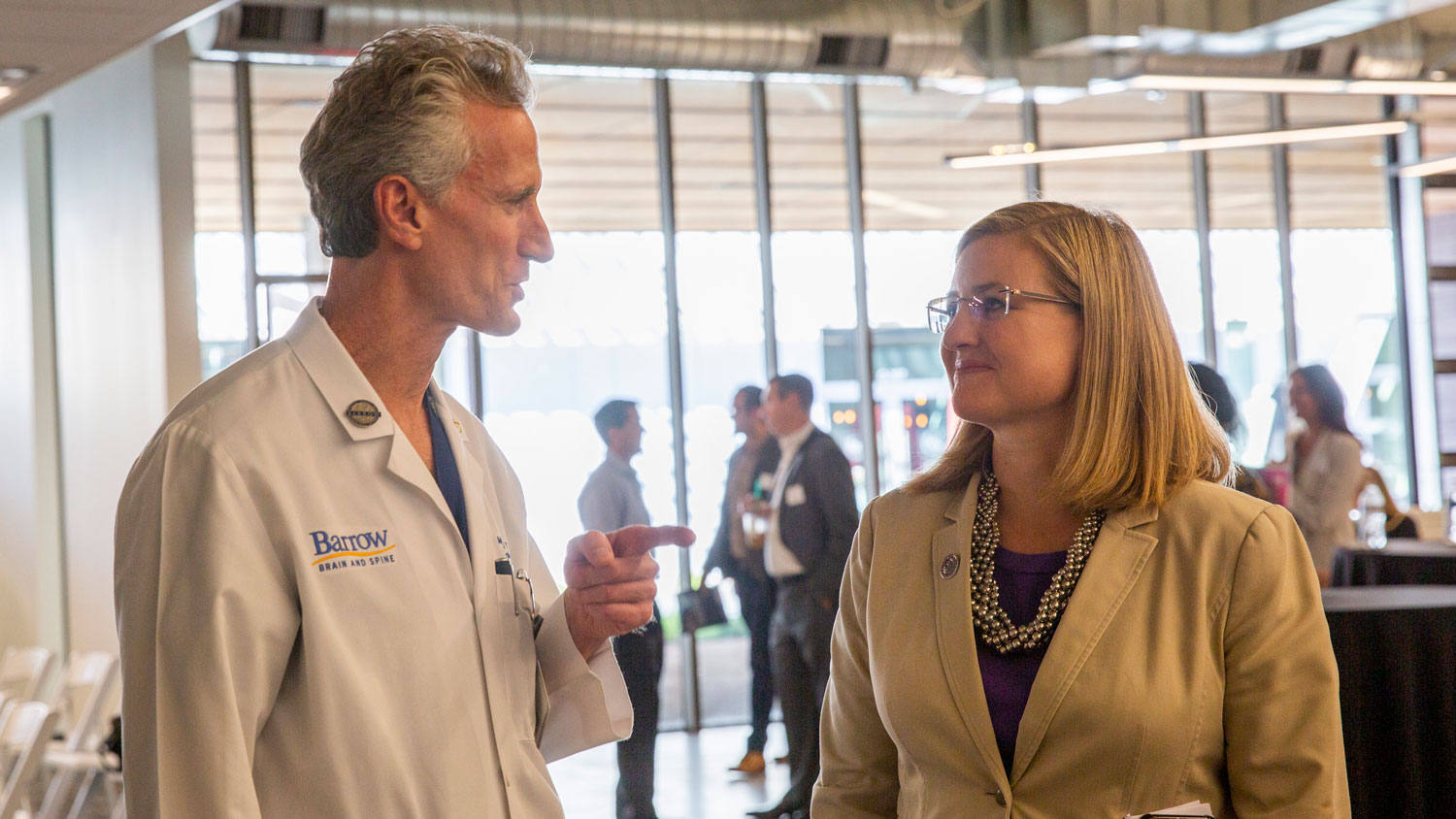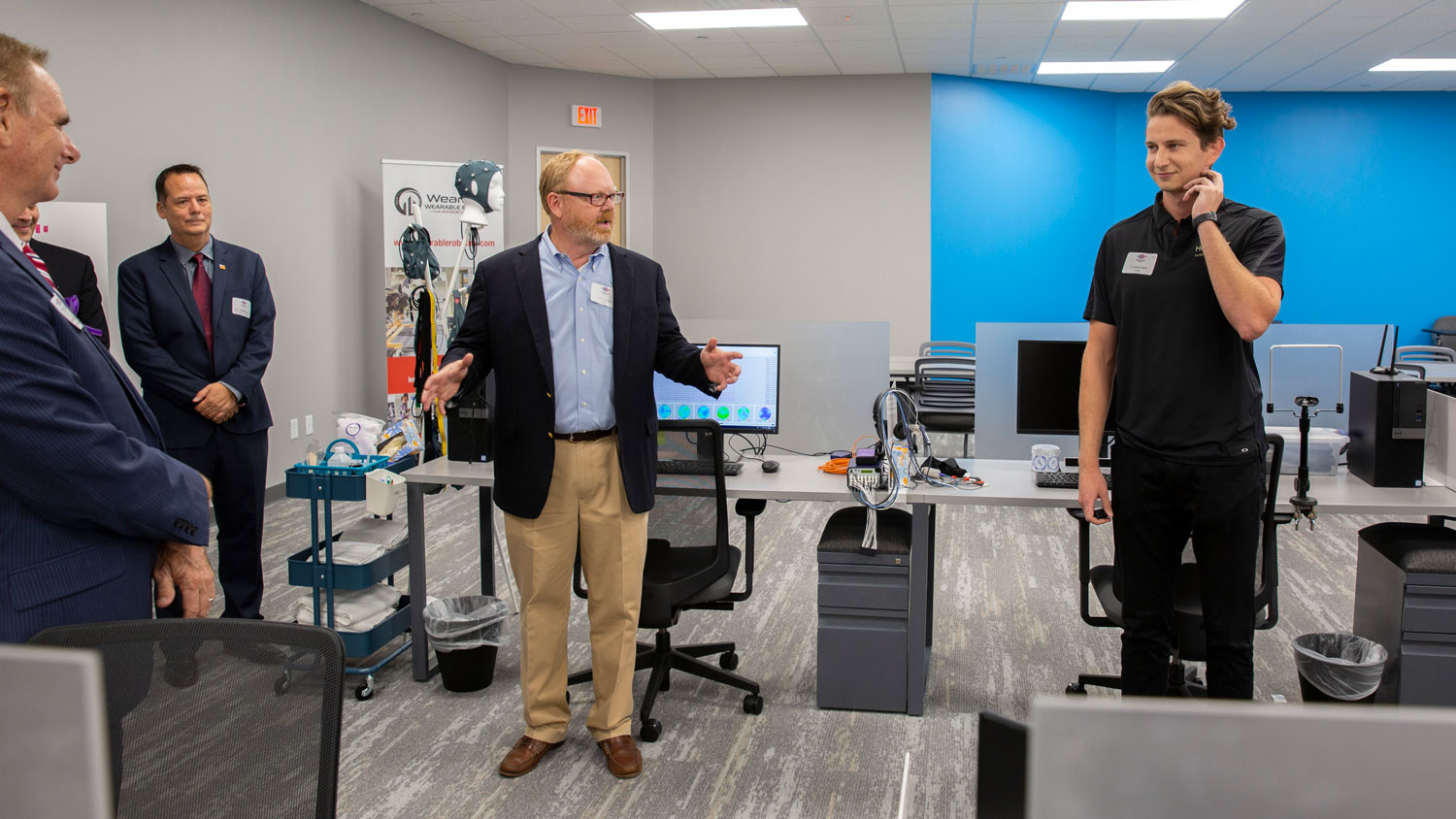
WearTech positions Phoenix as center of wearable tech industry

Above: The WearTech Applied Research Center, a collaboration between Arizona State University and local government, economic and health care organizations, is positioning the Phoenix metro area to be the hub of wearable technology innovation. Graphic by Rhonda Hitchcock-Mast/ASU
The future of health care is wearable. Handheld, on-body and in-body devices that monitor health status and help guide therapy will become integral to health care over the next few years.
The newly opened WearTech Applied Research Center is positioning the Phoenix metropolitan area as the hub of high-impact wearable and medical technology innovation.
“Arizona has long been known for high tech,” says Gregory Raupp, research director of the WearTech Applied Research Center and professor of chemical engineering. “We’re going to continue with high tech but in a different way. We’ve come to a point in time where you can take the rich functionality of microelectronics and put it in new forms, fits and functions … It’s as simple as putting on your clothes to adapt to this new technology.”
The wearable technology industry, with more than 245 million devices sold in 2019 alone, is estimated to be worth $25 billion globally by industry analyst firm CCS Insight.
The first-of-its-kind applied research center — a partnership between the Partnership for Economic Innovation, the Ira A. Fulton Schools of Engineering at Arizona State University, industry and local economic organizations — will support an entrepreneurial ecosystem to improve quality of life and human performance through the development of innovative wearable technologies.

Gregory Raupp, research director of the WearTech Applied Research Center, addresses distinguished guests at the WearTech Applied Research Center Grand Opening on September 30. Photographer: Monique Clement/ASU
“Our goal with this institute is that we become proud Arizonans of an Arizona-based intellectual property generation,” says Chris Camacho, president and CEO of the Greater Phoenix Economic Council. “It’s less about importing other states’ and other people’s technology and [more about] building our own.”
The 5,000 square-foot facility located at Park Central mall in downtown Phoenix opened at the end of September. The space provides validation and prototyping lab space for companies to test devices and direct access to expertise from Fulton Schools researchers for local startups.
“This collaborative center converges our world-class faculty and impactful research with industry partners’ ideas and needs,” says Kyle Squires, dean of the Fulton Schools. “It embeds our ability to effectively translate fundamental research into the marketplace at the pace of industry and make ASU’s backyard the competitive home of wearable medical technology.”
Jeff Guldner, president of Arizona Public Service, says the collaborative nature of an applied research center is what creates results.
“The idea is to bring resources from industry to move from a technology or research breakthrough to investment and then to manufacture, that benefits our state,” Guldner says. “It provides [researchers] with resources and support to develop technologies and solutions that the global marketplace is demanding, and we’re doing it right here in Phoenix.”
Jeff Weninger, a member of the Arizona House of Representatives, says the WearTech Applied Research Center will mean more companies are founded in Phoenix and will expand in Phoenix to stimulate the economy.
Underutilized fundamental research will lead to the design of new products and technologies to simplify our lives, create more jobs and tax revenue and attract elite faculty to ASU to enhance the experience of the next generation of the tech workforce, Weninger says.

Local government, business and economic representatives celebrate the opening of the WearTech Applied Research Center with a ribbon cutting. Photographer: Monique Clement/ASU
Leveraging a strategic location
The Phoenix metro area is growing and developing, but also drawing on its existing strengths in technology with various tech corridors and top medical institutions — across the street from the WearTech Applied Research Center is the Barrow Neurological Institute, the largest neurosurgical center in the country.
BNI President and CEO Michael Lawton says the organization is all about bringing engineering together with neuroscience to help people.
“The future in neuroscience is really bringing engineering together with patients and building these devices that make a difference,” Lawton says. “We have access to the kind of clinical material that this community needs to take their technology and test it out, see if it helps patients, see if it helps surgeons do better operations, and really make a difference.”
Lawton says he believes the hub has the capacity for great things.
“My vision for this little part of Phoenix is this will become the envy of the country,” he says, noting that the area will become the neuroscience center of the country like Houston is for spaceflight.
Phoenix Mayor Kate Gallego is also ready for the center to kick off worldwide impact from the area.
“The people who will work at this hub probably could be anywhere in the country, and we’re excited that they’ll call Phoenix home,” Gallego says. “We want to grow our own businesses that will put roots down here and help us build the Phoenix of the Future.”

Barrow Neurological Institute President and CEO Michael Lawton (left) and Phoenix Mayor Kate Gallego talk after opening remarks at the WearTech Applied Research Center Grand Opening. WearTech will leverage the strategic location near Barrow Neurological Institute in downtown Phoenix to promote the city as the hub of wearable technology innovation. Photographer: Monique Clement/ASU
Incubating innovation
The WearTech Applied Research Center currently hosts six research-based startup industry partners developing and testing wearable technology products at the center. Many of them involve ASU and Fulton Schools students, alumni and faculty.
FlexBioTech is an interdisciplinary effort between ASU faculty, students and industry and medical professionals to develop an at-home rapid diagnostic patch that uses sweat to detect alcohol and drugs. It was co-founded by Mayo Clinic medical oncologist and immunologist Karen Anderson and Jennifer Blain Christen, a Fulton Schools associate professor of electrical engineering.
WearTech helped connect the startup with a local company, True Mobile Health, which provides clients with a personalized approach to health care that mirrors what FlexBioTech is doing with diagnostics.
Blain Christen calls it a partnership that is greater than the sum of its parts, enabling each partner to approach individualized health care using their own expertise.
“WearTech has really allowed us to focus on the research in this partnership by providing us with both financial and ‘red tape’ support,” Blain Christen says. “They have done an amazing job of determining how to facilitate the partnership and worked within ASU to allow us to work on the project without needing to focus on the details of contracts and negotiations.”

WearTech Applied Research Center Operations Director Wes Gullett (left) introduces Hoolest Performance Technologies to grand opening guests as the company’s co-founder Nick Hool demonstrates the technology. Hoolest is creating a non-invasive vagal nerve stimulator to help people with post-traumatic stress disorder, panic disorder and other mental health conditions. Photographer: Monique Clement/ASU
Hoolest Performance Technologies is a student-led startup co-founded by biomedical engineering graduate student Nicholas Hool. Guided by principal investigator Raupp and supported by research coming out of the lab of Hool’s advisor, Fulton Schools Associate Professor William “Jamie” Tyler, the team is creating a non-invasive vagal nerve stimulator.
The device is being tested in clinical trials for use by people with post-traumatic stress disorder and panic disorder, and can be used to calm anxiety.
Other companies in the WearTech Center include GoX Labs, led by Fulton Schools Professor Thomas Sugar and the startup’s CEO Joe Hitt, who is also the executive director of the Wearable Robotics Association. They are developing exoskeleton and external devices worn to assist in human mobility and performance.
LevelUP, led by Debbie Crews, is a neurofeedback and performance enhancement startup.
Neurocea, LLC, led by Fulton Schools Professor Thurmon Lockhart, is developing a method to alleviate the physical symptoms of Parkinson’s disease to help people in their daily lives.
Vantronics, LLC, led by Fulton Schools Professor Hanqing Jiang, develops edible sensors for monitoring gastric pH levels in people with acid reflux and similar disorders in a more accessible and comfortable way.
These companies represent only the beginning of what is possible as they come together to at the WearTech Applied Research Center to create solutions to brighten the future of health care and beyond.

The entrance to the WearTech Applied Research Center’s 5,000 square-foot facility located at Park Central mall in downtown Phoenix. The space provides validation and prototyping lab space for companies to test devices and direct access to expertise from Fulton Schools researchers for local startups. Photographer: Monique Clement/ASU



































